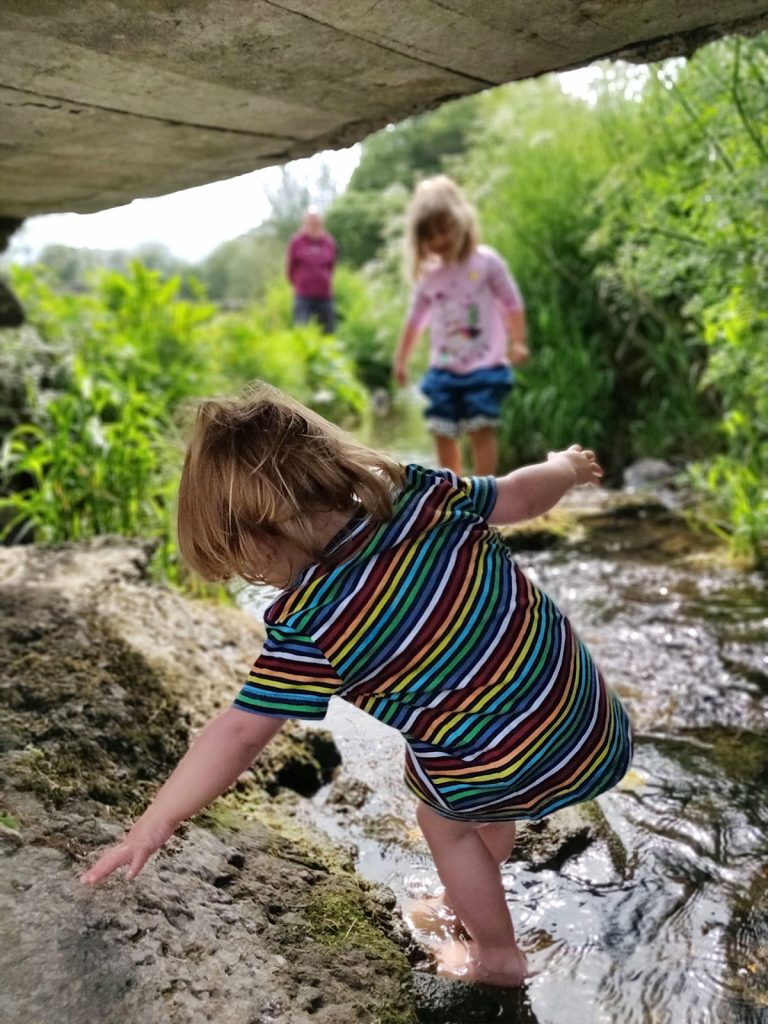
Making the most of online therapy with children, in spite of the glitches! Video and Blog
Written Thought Piece by Carolyn Hart
Online Therapy
Our clients are ‘digital natives’ and we clinicians are mostly not. At best, we struggle to keep up with ever-changing software and nuances to language and emojis. The young people I see are comfortable with computers and technology and for them, technical glitches and novel uses of technology are part of the process of video-mediated psychotherapy.
Our clients are the experts and this impacts on the dynamics of the therapeutic relationship. Instead of becoming defensive about them, if we think in terms of object relations, it opens up a new dimension to this work. Likewise, we are no longer solely responsible for the therapeutic environment in which the session takes place, nor do we partake in the rituals that envelop a session, such as waiting to be collected from the waiting room followed by the walk to the therapy room and meeting the parent or carer at the end. Perhaps there is something to be gained from the client having a greater sense of agency in designing the transitional space in which moments of intimate meeting can take place?
I believe that children can also powerfully use technology to express their embodied experience. This view is in contrast to Russell (2015), who wonders if it is possible to make use of another’s mind if their body is not present and feels that the absence of bodies confines the psychoanalytic process to ‘states of mind’ rather than ‘states of being’.
Transference reaction to technology

Photo by Cookie the Pom on Unsplash
At the start of the first global lockdown, as the working population largely transitioned to home, the internet struggled to cope with the surge in use. I think it was a common experience for those of us who had to access client notes via a Virtual Private Network (VPN), to be locked out or have the system unexpectedly crash. I became extremely frustrated, anxious and then defeated. It was only on reflection that I realised this was a ‘transference-like‘ reaction, rooted in my childhood relationships with unreliable parents.
I mention this because both clinicians and clients bring ‘transference-like’ reactions to their technology during screen-based psychotherapy. Inevitably these reactions bring something different to the transitional space that we unconsciously co-construct.
Each of my clients has their unique transference relationship to technology too. In the following scenarios, I look in more detail as to how these dynamics have been played out in sessions and alter the analytic third or transference space we unconsciously co-construct. In face to face work, I as the clinician take responsibility for the setting and environment and I try to ensure there will be no interruptions. During screen-based sessions, however, the state of connectivity over the internet results in a ‘third party’ imposing obstacles and interruptions to communication in our sessions.
One of my clients, a young boy in care, has a seemingly ceaseless appetite for anything involving technology. Indeed, one of the difficulties his carers experience is placing boundaries around his use of the internet, Xbox and other devices. His reaction to having his access limited is as if he feels abandoned and rudderless. His relationship with his devices has parallels with his wished-for relationship with his mother: ever-present, ever responsive and predictable.
When we transitioned from face to face sessions to video-based sessions, he was predictably enthusiastic. However, during the first sessions, he struggled with how to ‘negotiate his desires for closeness and distance’ (Trub & Magaldi, 2017). He had a separate video camera which he used in order to take close-ups. From moment to moment, I was presented with a full-screen image of his nostril, eye or tongue and the next moment he would disappear off-screen and hide under the desk to “pop-out” like a Jack In The Box. I found this disorientating, but it powerfully communicated a rapid fluctuation in feeling. One moment being intruded upon, the next abandoned and then shocked by his sudden reappearance. I was in a state of anxious anticipation as to what would come next.

Photo by Varun Gaba on Unsplash
I had not experienced this as powerfully in our face-to-face sessions. Although he could not, in fact, touch me during our video sessions, I experienced a feeling of my boundaries being violated. It seemed likely that he was letting me know about aspects of his own experience in relation to his mother in early childhood.
A technical glitch challenged that relationship
During a session a few weeks later, the internet connection first pixelated and then froze. In this moment neither I nor the technology was satisfying his wished-for parental relationship. I had become disembodied in space, time, sight and sound. His response was to activate the text box. We were using a video platform in which the textbox is a large black rectangle that covers most of the screen so that a visual representation of the other person is almost totally unavailable for both participants.
The experience of pixilation and freezing meant that he was no longer able to project his feelings, nor was I able to modify them so that he could reintroject them in a more tolerable form. At one level it felt like a digital version of dissociation and momentarily we were both in touch with a ‘nameless dread’ Bion (1967).
Using hardware to communicate regression
At one point, I was informed by his carer that since our last session, there had been a painful contact with his maternal birth family. As a consequence, he felt that his traumatic experiences and memories had been diminished.
During the ensuing session, he was playing with Kinetic Slime (a combination of slime and sand). This substance appeared to be animate. It expanded, spread and slid across the table. As it moved and expanded, bubbles appeared in its surface. It reacted as if it were living.
He was engrossed in gathering up the slime, then releasing it in order to watch it expand. The bubbles provoked him to poke, create more bubbles, then poke again. The slime seemed to respond as if an amoeboid creature. As I watched, I again began to feel violated. It dawned on me that he was oscillating between being engaged in intrusive fantasies and a fear of being suffocated and overwhelmed. Just as I had begun to formulate this thought, he moved the video camera and pointed it at the laptop camera, resulting in the production of a ‘hall of mirrors’ effect, which I found extremely disorientating. He had used the technology to let me know about his primitive need to be in a state of fusion with me, where internal and external states were merged.
An ambivalent transference reaction and transitional phenomena
Another client, an adopted, adolescent boy, could be described as being ambivalent to life. He both wants and hopes for a relationship with his mother but has also becomes fearful and distrusting of his relationship with his, adoptive parents, me and relationships in general. He craves friendship but cannot negotiate the appropriate distance.
In face to face sessions, he sometimes writes to me in preference to talking. At home he sometimes uses his phone to text his parents instead of talking directly to them. In relation to me, I understood the writing as an expression of ambivalence about the therapeutic process, both wanting to be understood but fearful of intimacy. The texting to his parents was similar, maintaining a connection while denying a need for parenting or a position of dependency. The writing in sessions seemed to occupy a transitional space between his inner and external realities. In this way, his mobile could be regarded as a transitional object.
With the move to remote sessions, this conflict between wanting intimacy and fearing a close relationship manifested itself in terms of choice of technology. Sometimes we would start on a video platform and he would request to move to a telephone session. Other times we would start on the phone and he would request a change to a video platform. One time he stayed on a video platform for the session but was a flat, partial-presence.
I asked him where his thoughts were, and he admitted that he had been playing a game on his phone at the same time as (not) attending his session with me. He was involved in a secretive other space, which until I questioned him, was unknown to me and cannot, therefore, be regarded as a transitional space, but may have functioned as a transitional object, mediating his internal and external experiences.
Text battles: Part objects or looming games?
Another child likes to engage in what I can only call a ‘text box fight’. The idea is to see who can write or text short words such as “hello“ the greatest number of times over a set period. Initially, I thought about this in terms of her relating to me not as a person with feelings, but as a ‘part object’ that she wanted to control. However, there seemed to be something more playful, more exciting than that. As Winnicott says:
Play is immensely exciting. It is exciting not primarily because the instincts are involved, be it understood! The thing about playing is always the precariousness of the interplay of personal psychic reality and the experience of control of actual objects. This is the precariousness of magic itself, magic that arises in intimacy, in a relationship that is being found to be reliable (1971/1997, p.47).
I wondered if this was a digital version of a looming game. A particular kind of game described by Alvarez (1998), ‘where mother plays with the distance between her face and her infant’s face,’ as a way of helping the infant internalise representation of the primary caregiver or what is also known as a move towards object constancy.
I felt she wanted to test out if I was really there when sound and vision became distorted, or the picture froze. She seemed to be testing both his own and my agency. Was I alive enough?
Email exchange
I have found some adolescents prefer to engage only by email. I think this is linked to a greater feeling of self-agency when so much feels beyond their control.
I set a limit on the number of words they can send in a week. They can email me whenever they want, and I agree to answer once on a certain day. I have found that we reach the core problem quicker than in face to face sessions. There is a dance as in the text battles above, but it tends to be expressed in how the emails are addressed and signed off. They have time to reflect on what they share and process my response and perhaps because of this, there seems less need for what I call ‘spacer’ sessions.
Internet failure; developing a capacity to be alone and object constancy
A young person who was working towards an ending with me reacted in a way that clearly demonstrated object constancy when we had a failure of the internet connection. He attended the session on his laptop but sent me a message on his phone to let me know that he was back in the waiting room. We had been drawing mazes and reflecting on feelings about reaching a ‘dead-end.’ Could one turn back? Was it just a set-back? Is it possible to overcome the temptation to give up and instead look in new directions? Whilst we had lost connection he had used his phone to google some maze templates for us to try. I felt this was very much like being able to play separately in the presence of another. It gave me confidence that he would manage as we worked towards the ending of therapy.
These scenarios took place with children and young people I already had a relationship with. Starting with someone new via remote working is challenging. Wherever possible I have met my new clients for a walk in the woods. With my latency and younger children, this has provided an opportunity to get involved with symbolic play with the child and importantly be observed by the parent/carer. I go armed with paper which can easily be folded into paper boats to be ‘launched’ on the streams. The ensuing play provides plenty of opportunity to explore the difficulties of ‘staying afloat,’ how to negotiate ‘stormy waters’ or think about what help is needed to move on, when ‘held back by a dam’. I find this very helpful in forming a therapeutic alliance both with the children and the parents/carers.

Photo by Dave Clubb on Unsplash
I spend quite a lot of time with carers/parents before starting remote work which includes the child. Initial sessions are usually with the carer or parent present and work towards working with the child individually. It is therefore important that we can work together and that they feel happy to supply a box of materials for their child to use creatively in our remote sessions that follow.
The young people I work with have found ways of being playful with technology. I feel that meaning-making in this new virtual therapy frame is to some extent dependant on the clinician being willing to be open to playing with the new parameters too. As Winnicott suggests, an analyst who cannot play is “is not suitable for the work” (1971, p.54). Young clients have grown up with technology, can use its hardware, software and glitches to powerfully communicate their states of being. They are very much alive and demand that I be too.
Case examples have been anonymised.
View more in-depth thinking from our guest bloggers on our Thought Pieces page.
References
Alvarez, A., 1998. Failures to link: Attacks or defects?: Some questions concerning the thinkability of Oedipal and pre-Oedipal thoughts. Journal of Child Psychotherapy, 24(2), pp.213-231.
Bion, W., 1967 from Second Thoughts in 1984. A Theory Of Thinking. 3rd ed. London: Maresfield press.
Russell, G., 2015. Library Of Technology And Mental Health Series. Screen Relations: The Limits Of Computer-Mediated Psychoanalysis And Psychotherapy. Karnac Books.
Trub, L. and Magaldi, D., 2017. Left to Our Own Devices. Psychoanalytic Perspectives, 14(2), pp.219-236.
Winnicott, D., 1971. Playing And Reality. London: Routledge.
Carolyn Hart publications
Hart, C., 2013. Held in mind, out of awareness. Perspectives on the continuum of dissociated experience, culminating in dissociative identity disorder in children. Journal of Child Psychotherapy
Hart, C., 2012. The “Dead Mother Syndrome” and the Child in Care: A Framework for Reflecting on Why Some Children Experience Multiple Placement Breakdowns. Journal of Infant, Child, and Adolescent Psychotherapy
Hart, C., 2012. Clinical commentary by Carolyn Hart, child and adolescent psychotherapist in a specialist service for vulnerable young people in Sheffield. Journal of child Psychotherapy
Hart, C., 2011. Can we, can’t we, can we, can’t we, can we help him join the dance? The need for multimodal processing in the move towards meaningful communication. Journal of Child Psychotherapy
Hart, C., 2008. • Affective association: an effective intervention in countering fragmentation and dissociation. Journal of child Psychotherapy





